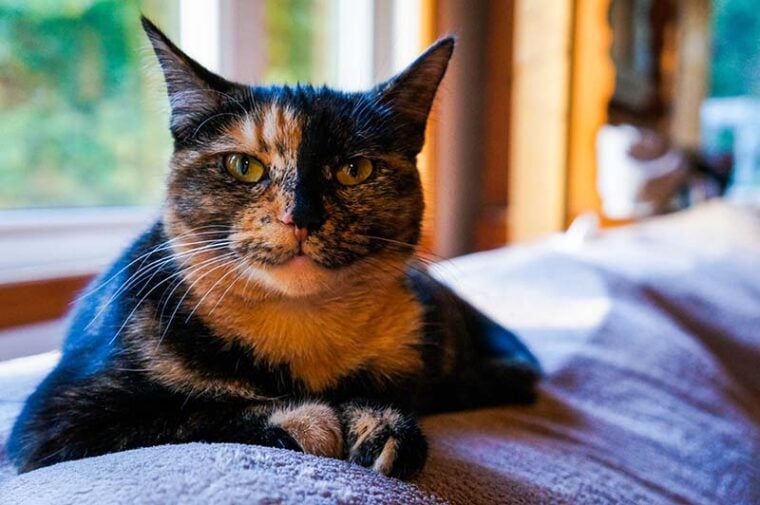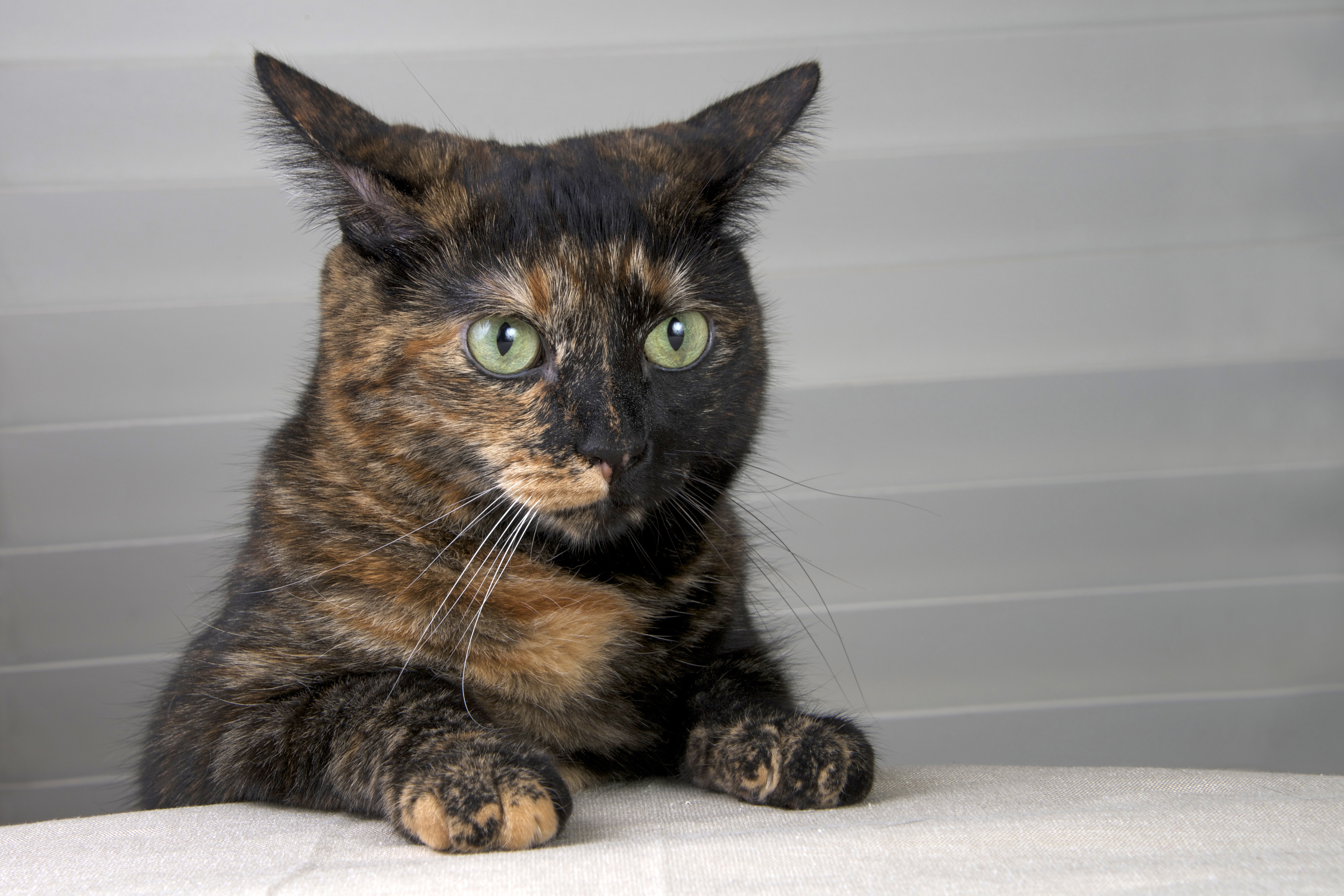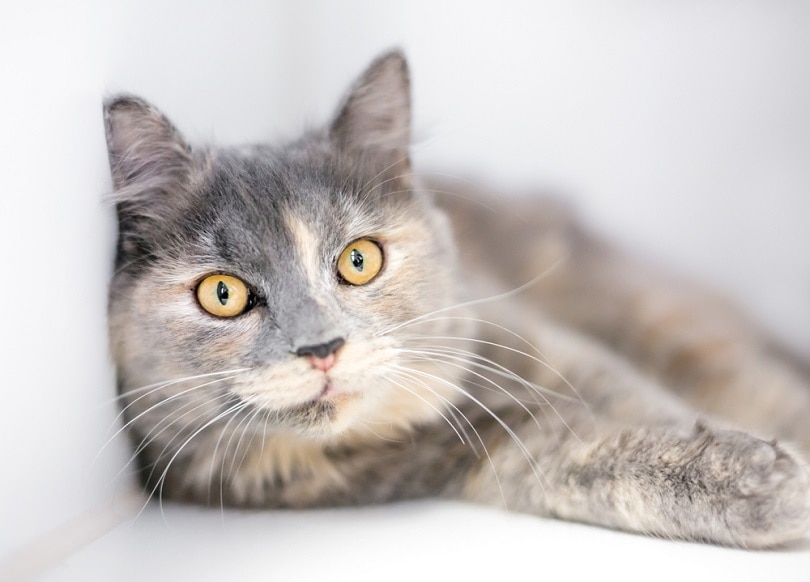
If you’ve ever owned a tortoiseshell cat, you might know the answer to this question. If not, you might be interested that while not every tortoiseshell cat is female, at least 99.6% of them are. While all Torties aren’t female, so many of them are that the rumor started that tortoiseshell cats can’t be male.
So, why is that? Is it lucky to get a tortoiseshell cat that’s a male? How rare is it for a Tortie to be a male? We’ll answer those questions and more in the blog below.

Do Male Tortoiseshell Cats Exist?
As rare as it is for a Tortie male to be born, they do exist. However, in most cases, if you find a male Tortie, the cat will be sterile, weak, and have many health problems. This is said to be due to a chromosomal imbalance in the male of a Tortie litter.
The male can also suffer from a condition called Klinefelter Syndrome, which causes everything from brain damage to organ failure and genital deformities in the poor feline.

Exploring the Genetics
To try and understand why most Torties are female, you need to understand the genetics behind it. Males have an X and Y chromosome, and females have two X chromosomes. If you’ve noticed, Torties are an orange and black color, which only happens with X chromosomes. So, simply put, the Y chromosome can’t produce the orange and black color together, meaning a male can only be orange or black, not orange and black.
If you end up with a male tortoiseshell cat, it will suffer from a genetic abnormality nine times out of 10. Male Torties usually have severe health issues and short lifespans.
How Did the Tortoiseshell Cat Get Its Name?
The Tortie got its name from the shells of a tortoise. Sadly, in the 1970s, tortoiseshell jewelry was extremely popular, as was home décor and eyewear made from tortoiseshells. This led to the decimation of the tortoise population. However, now these items are made from synthetic material, as sanctions were passed to save what was left of the tortoise population.
As for your adorable Tortie, the name comes from the pattern on a tortoise, which is black, orange, cream, yellow, and red, all of which you can find in your Tortie’s fur color.
It’s important to note that the tortoiseshell cat isn’t a particular breed; it’s just a color.
Breeding and Tortoiseshell Cats
You might now be wondering which breeds contain the tortoiseshell coloring. Some of the most popular breeds to produce a tortoiseshell cat include the Maine coon, British shorthair, Cornish rex, Persian, American shorthair, ragamuffin, and Japanese bobtail.

A Few Facts About the Tortie
Now that you know all about the coloring and female Tortie, you need to know that there’s a lot more to a Tortie cat than just distinctive coloring. Most Tortie females are sassy but lovable. They have a ton of energy, and you’ll often see them running through the house at top speeds. Make sure that you have plenty of toys and places for your Tortie to climb, or she might find a few of her own.
Not only does the Tortie get sudden bursts of energy, but she can also be a tad bit aggressive, especially with other cats in the home. Torties are considered good luck charms in many parts of the world. The cats are credited with curing warts, running off ghosts, and even bringing good fortune and money to the pet parent who is lucky enough to own one.
This is also why many pet owners search far and wide for a Tortie; it makes a great pet and a loyal, loving companion. If you’re considering adopting or purchasing a tortoiseshell cat, you couldn’t ask for a more loving, gentle companion. Just make sure that you’re ready to take on the responsibility for this energetic little feline.

Conclusion
Meeting a tortoiseshell male is an extremely rare occurrence, and even when it happens, it’s possible that the cat is going to be unhealthy and have a short lifespan. 99.6% of Torties are female, and though this is only a color, not a breed, they are in high demand. Even though the Tortie doesn’t have the distinction of being its own breed, it’s still a legend in its own time.
Featured Image Credit: David Boutin, Shutterstock





